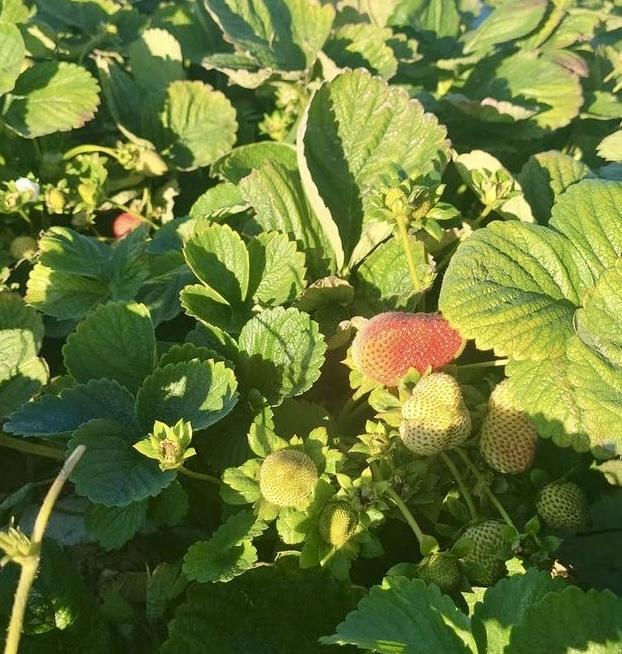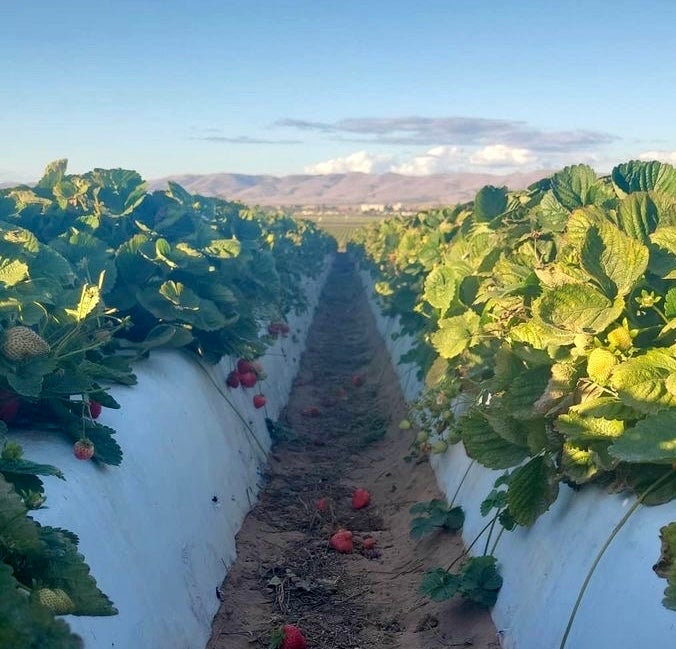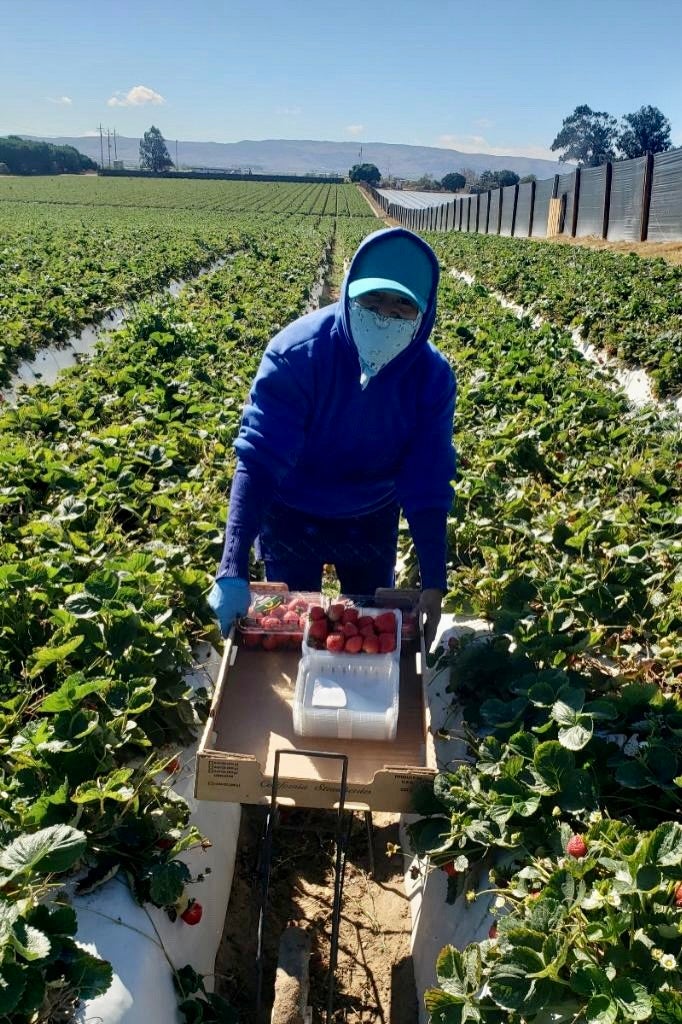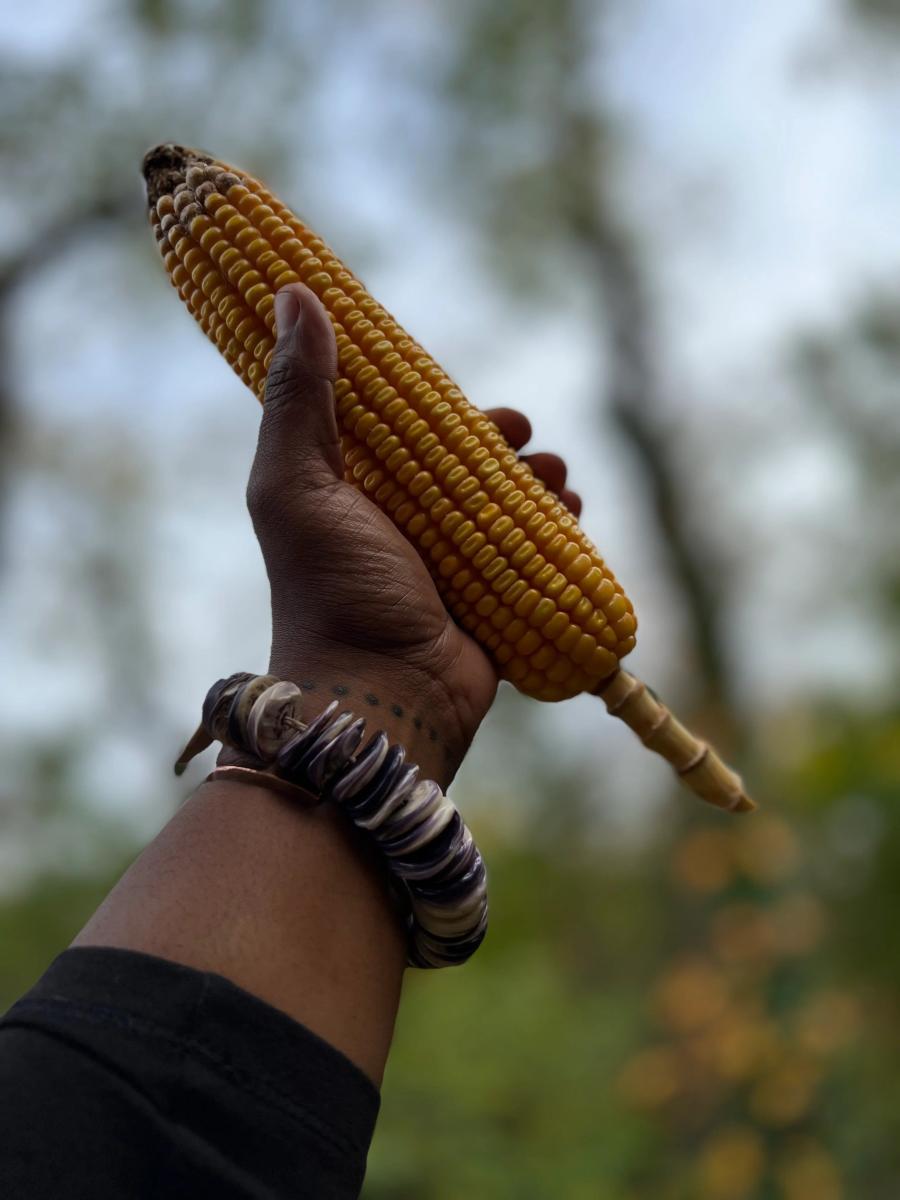
By Claudio Hernandez (Na Ñuu Savi/ Mixtec)
Mamá wakes me up gently by whispering in my ear, “Claudio…Claudio. Ntakoo se’e. Ntasalistuku ra na ko’on. Sava’á cafe. Ntakoo ra ko’o cafe tatu kunu.” Wake up my child. Get ready, and let’s go. I made coffee. Wake up and drink coffee if you want. She wakes me up like this for school or on Saturday mornings when I help her and Papá at work in the strawberry fields. Sometimes I can hear her making tortillas and wrapping food for everyone at home around 4:30 or 5:00 a.m.
I slowly lift myself from the living room couch to brush my teeth and change into a faded long sleeve button-up shirt and a worn out pair of jeans. In the kitchen, Mamá wraps two stacks of burritos made with half corn and half flour tortillas in aluminum foil. She places one pile in the lunchbox we are taking to work and the other in a blue tenate (palm leaf basket) from which my siblings Soledad, Diego, Crisoforo, and Abelardo will grab breakfast when they wake up.
“Kunaa loncheko. Kiin in gorro chikau xinu. Na ntasama ra na ko’on. Tsa nchatu paku ini carru,” she says. Take our lunch. Take a hat to put on your head. I am going to change, then let’s go. Your dad is already waiting in the car. She keeps clean hats together but not always in the same place, so I scan around the living room until I find a set of stacked caps on the entertainment system next to the altar. I take one with a color that matches my shirt, grab the lunchbox, and head to the door, where I put on a pair of old running shoes. Outside, the sky is a dark blue gradient lighting the path of the sun as it rises from the east. The neighbors can be heard stepping out of their homes, shutting their doors, and heading into their cars as they prepare for work at one of the fruit or vegetable fields surrounding Santa Maria.
Papá sits in the car waiting for Mamá to tell him it is time to go. I step into the backseat with our lunchbox as he is sipping coffee. “A va’ani ni kixu?” he asks me. Did you sleep good? To which I reply, “Va’ani nikixiyu.” I slept well. Papá repeats his question; I lean in and respond louder. He had a tumor in his left ear that impacted his hearing. Even with a hearing aid, he can’t always hear. Mamá opens the passenger side door and changes into her shoes in the car. “Ntatuun carru,” she tells Papá. Start the car. He turns the ignition, the radio starts to play banda music, and we all click on our seatbelts as Papá makes his way west. I lean my head back to try and sleep the 20-minute ride down Main Street to the dirt pathway that will eventually take us to the plot of land owned by El Jefe.
Nchee nchu’a ña sachon nu fil. Working in the fields is difficult. The first time Mamá and Papá took me to work with them was as a consequence of misusing their phone and raising their phone bill. By taking me to work with them in the fields, or nu fil, Mamá and Papá wanted me to think about their hard labor to earn money. Eventually, my siblings and I started to go with Mamá and Papá because they began to pay us to help them increase the number of strawberry boxes they could harvest and because the extra help eases the pain on their backs. Cold, hot, and rainy days nu fil are the hardest to work through. On cold mornings, the light of the sun feels like the comforting warmth of a blanket slowly being draped onto fieldworkers with numb hands, feet, and faces. During hot days, sometimes I squeeze a strawberry in my hand so its juices will make it easier to catch the coolness of a stray breeze. Workers die from the heat in places across agricultural California where the weather is extreme and the companies they work for neglect to provide water, breaks, or shade. When it rains, farmworkers get stuck in the mud between surcos (crop rows) or have to maneuver around the mud as they harvest, adding to the physical demands of their labor.

Between rows. Ma'in yuku
Everyone pushes forward despite the cold, heat, and rain. Mamá will sometimes chat with relatives working in the row next to her in Tu’un Savi (Language of the Rain), a language with more than 80 variants spoken by Na Ñuu Savi (People of the Region of the Rain, Mixtec) in parts of the Mexican states of Oaxaca, Puebla, and Guerrero. She’s learned several other variants of Tu’un Savi by picking up on the slight differences of speakers from other communities around her. Other workers tell each other jokes or carry portable radios tuned into the local Spanish music station to pass the time or for motivation. Some listen to chilenas (band music from Ñuu Savi, The Region of the Rain) broadcast through La Hora Mixteca on Radio Bilingue.
When we arrive at the strawberry fields owned by El Jefe, Mamá pulls out two bandanas. She uses one to cover her nose and mouth, and the other to cover the top of her head and keep the other bandana secured. All women farmworkers cover their faces this way to prevent them from breathing in dust and chemicals and to protect themselves from sun damage. She puts a hat over the bandana on her head to complete her uniform.

Mamá harvesting strawberries left at the end of the season that will be distributed as market strawberries. Staka Má fresa ña ni ntoo ta ntsinu temporada (yoo tsio) ti. Ku nku'unti nu marketa.
Through the window, I can see the supervisor pull into a dirt path at the end of the surcos with a large truck carrying large plastic containers used during the cannery season. The strawberry season begins around February and lasts until about August. Market season happens in the first half of the strawberry season; these are the strawberries you find in small plastic containers at the grocery store. Cannery season is from mid-May to the end of the strawberry season, when strawberries are harvested without the stem because they will be used in canned products. Cannery strawberries are harvested using a ring with a sharp end worn on the thumb to cut the complete stem from a strawberry. Papá fixed one up for me so it would fit in my skinny thumb. I fidget with it and look outside while Mamá puts on a pair of running shoes covered in dirt from work.
About 15-20 cars are parked along the main dirt road. Very few of them have only one passenger since many farmworkers carpool to save money. Some workers are still getting ready, like Mamá, while others are already walking toward the large truck carrying with them carritos, small carts with one front wheel. “Na ko’on vari tsa nikitsána,” she says. Let’s go, they’re already starting. Mamá and Papá step out to grab their carritos. I don’t have one since I only work with them about once a week. We join everyone, most of us wearing a hat, a hooded long-sleeve sweater with a button-up shirt underneath, a worn pair of jeans, and shoes with dirt on them.
After grabbing a plastic container from the truck and a punch card, Mamá and Papá pick a surco right next to each other. I join them in Mamá’s surco after putting our lunch down on the back of another truck attached to portable restrooms. Mamá and Papá will start at the end closest to the truck, and I start furthest away so I can carry their boxes as I fill mine up and take them down to the truck. They also harvest the strawberries I miss as they move up. By the end of the day, sometime between 3:00-5:00 p.m., they’ll both remind me, “Va’a nchu’a ntoo satá ta chincheuyu ni se’e.” My back feels relieved when you help us, my child.
-- Claudio Hernandez (Na Ñuu Savi/Mixtec) is a 2022-2023 Cultural Survival Writer in Residence.
Top photo: Strawberry shrubs. Kue tu fresa.



